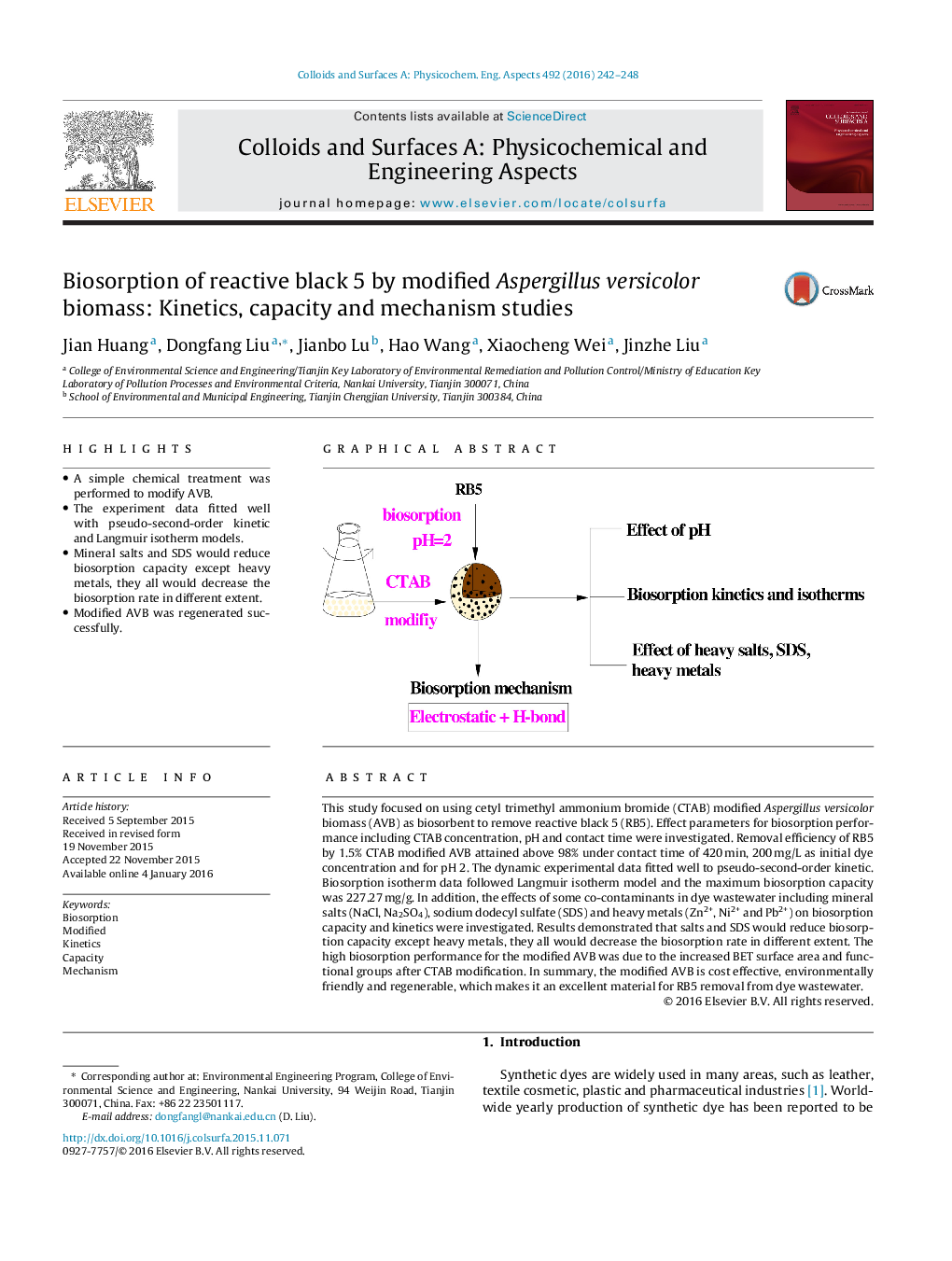| Article ID | Journal | Published Year | Pages | File Type |
|---|---|---|---|---|
| 591785 | Colloids and Surfaces A: Physicochemical and Engineering Aspects | 2016 | 7 Pages |
•A simple chemical treatment was performed to modify AVB.•The experiment data fitted well with pseudo-second-order kinetic and Langmuir isotherm models.•Mineral salts and SDS would reduce biosorption capacity except heavy metals, they all would decrease the biosorption rate in different extent.•Modified AVB was regenerated successfully.
This study focused on using cetyl trimethyl ammonium bromide (CTAB) modified Aspergillus versicolor biomass (AVB) as biosorbent to remove reactive black 5 (RB5). Effect parameters for biosorption performance including CTAB concentration, pH and contact time were investigated. Removal efficiency of RB5 by 1.5% CTAB modified AVB attained above 98% under contact time of 420 min, 200 mg/L as initial dye concentration and for pH 2. The dynamic experimental data fitted well to pseudo-second-order kinetic. Biosorption isotherm data followed Langmuir isotherm model and the maximum biosorption capacity was 227.27 mg/g. In addition, the effects of some co-contaminants in dye wastewater including mineral salts (NaCl, Na2SO4), sodium dodecyl sulfate (SDS) and heavy metals (Zn2+, Ni2+ and Pb2+) on biosorption capacity and kinetics were investigated. Results demonstrated that salts and SDS would reduce biosorption capacity except heavy metals, they all would decrease the biosorption rate in different extent. The high biosorption performance for the modified AVB was due to the increased BET surface area and functional groups after CTAB modification. In summary, the modified AVB is cost effective, environmentally friendly and regenerable, which makes it an excellent material for RB5 removal from dye wastewater.
Graphical abstractFigure optionsDownload full-size imageDownload as PowerPoint slide
